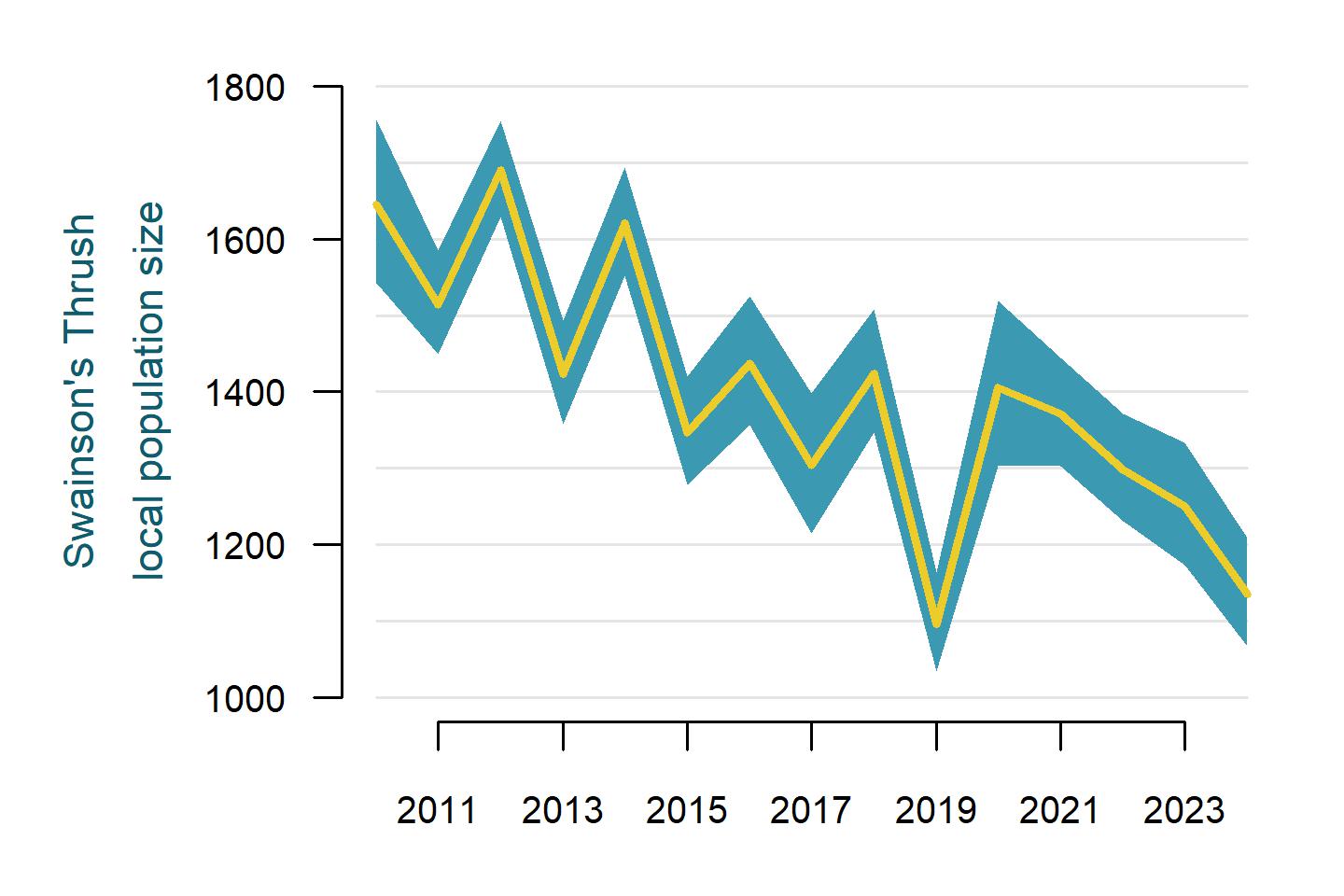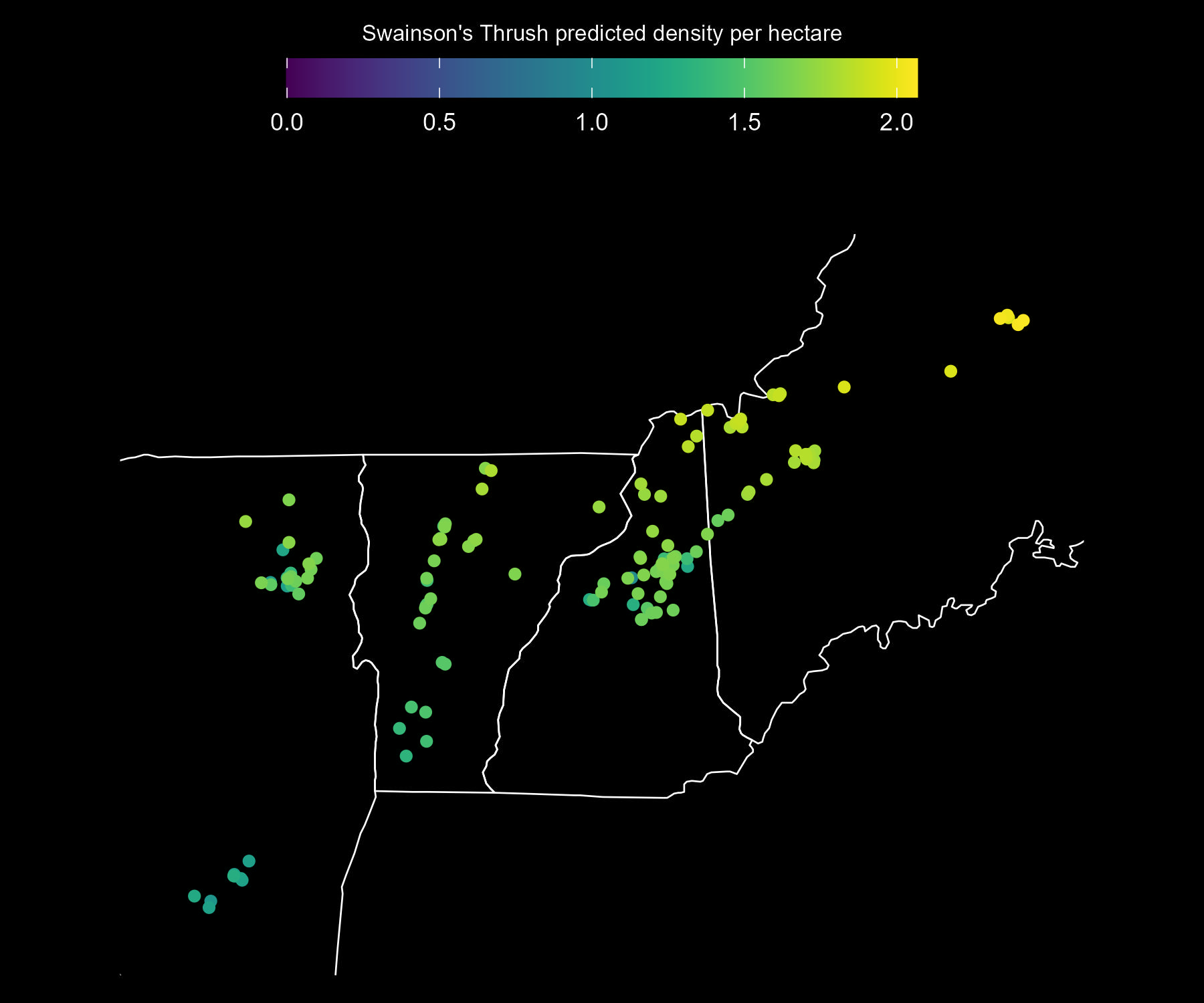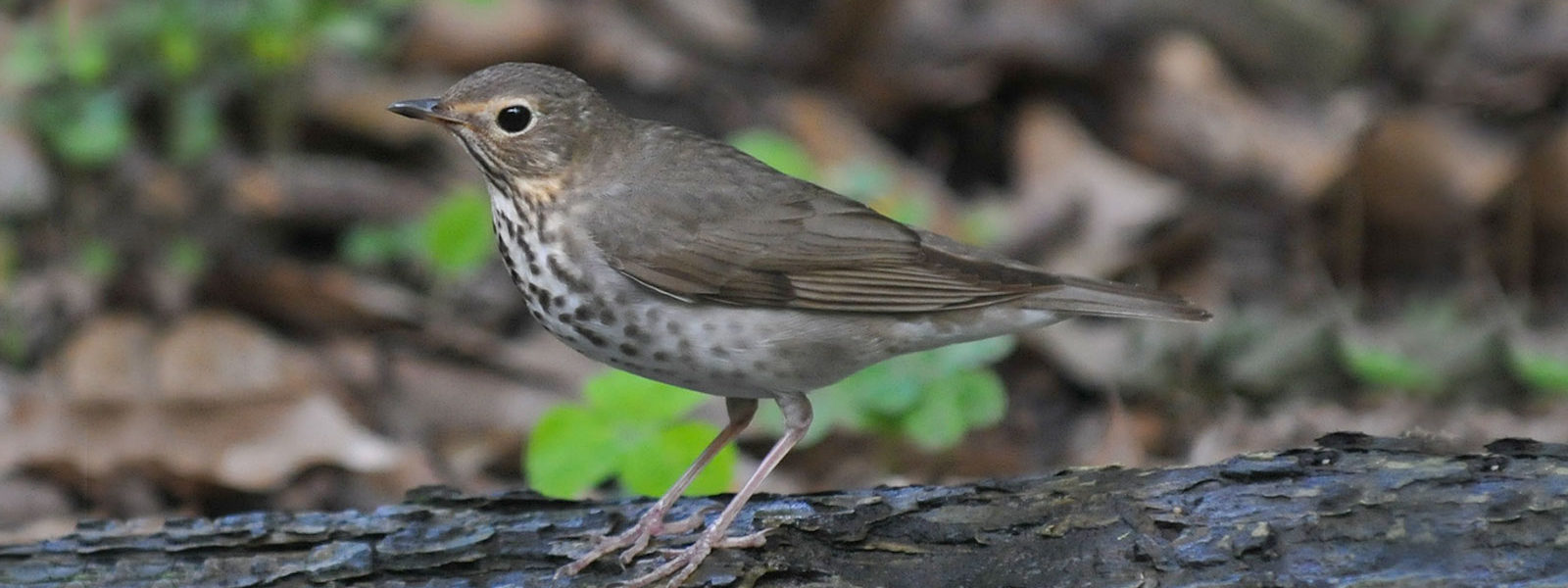The State of Swainson’s Thrushes in the Northeast
Regionally: Declining

The mean (thick, yellow line) annual estimate of Swainson’s Thrush abundance within the immediate area surrounding all 803 Mountain Birdwatch sampling locations, with a 95% Bayesian credible interval (blue polygon, representing estimate uncertainty).
Swainson’s Thrush numbers have likely decreased since Mountain Birdwatch began. Annual fluctuations are evident, but overall counts of this species have steadily declined in the northeastern U.S. over the last half-century. Mountain Birdwatch data indicate an average decline of 2.24% per year in the mountains of our region; this trend equates to a 27.19% decline in population (80% credible interval = -34.77% to -18.85%) between 2010 and 2024.

Predicted Swainson’s Thrush adult density per approximate hectare in an average year (between 2010 and 2024), as estimated from Mountain Birdwatch data. The base map shows the extent of the Mountain Birdwatch region: eastern New York, Vermont, New Hampshire, and western Maine.
| Region | Mean annual trend (%) | Trend (80% CRI) | Probability of decrease | Probability of increase | Population change (%) 2010-2024 | Population change (80% CRI) |
|---|---|---|---|---|---|---|
| All regions | (-3.01, -1.48) | >0.99 | <0.01 | -27.19 | (-34.77, -18.85) | |
| Maine | (-2.80, -1.05) | >0.99 | <0.01 | -23.92 | (-32.81, -13.74) | |
| New Hampshire | (-2.95, -1.31) | >0.99 | <0.01 | -26.03 | (-34.26, -16.88) | |
| New York (entire region) | (-3.89, -1.90) | >0.99 | <0.01 | -33.68 | (-42.64, -23.58) | |
| New York (Adirondacks only) | (-4.11, -1.97) | >0.99 | <0.01 | -35.03 | (-44.40, -24.28) | |
| New York (Catskills only) | (-2.88, -0.45) | 0.95 | 0.05 | -21.50 | (-33.53, -6.08) | |
| Vermont | (-2.88, -1.09) | >0.99 | <0.01 | -24.44 | (-33.59, -14.17) |
Globally: Declining
Trend estimates from the North American Breeding Bird Survey and eBird largely agree with each other and Mountain Birdwatch data. These data sources indicate modest, widespread declines in Swainson’s Thrush numbers throughout North America (~0.4% per year). These declines appear to have begun in the early 1980s, and are most severe across the northeastern U.S. and southeastern Canada. They have disappeared from many locales, such as coastal areas and major interior valleys, that they once inhabited in California. Counts of this species made at several migratory stopover sites (e.g., Long Point Bird Observatory) have declined as well. Areas where population trends are increasing for Swainson’s Thrush include the the British Columbia coastal forests and Alaska.


